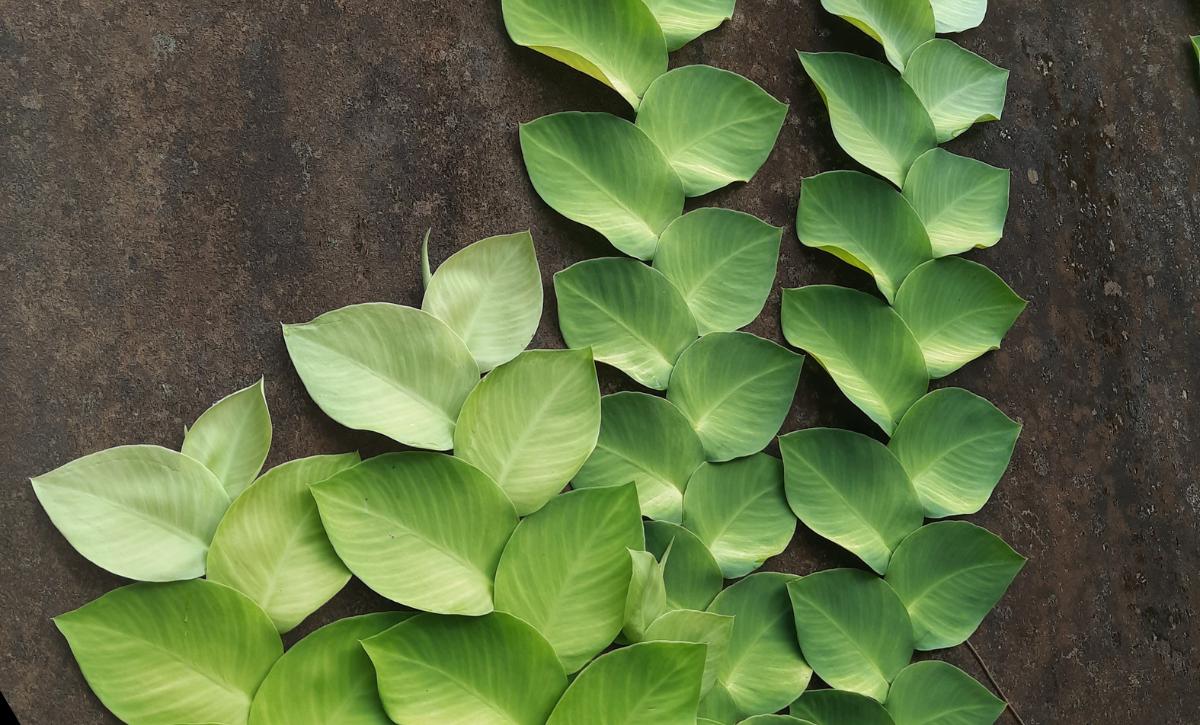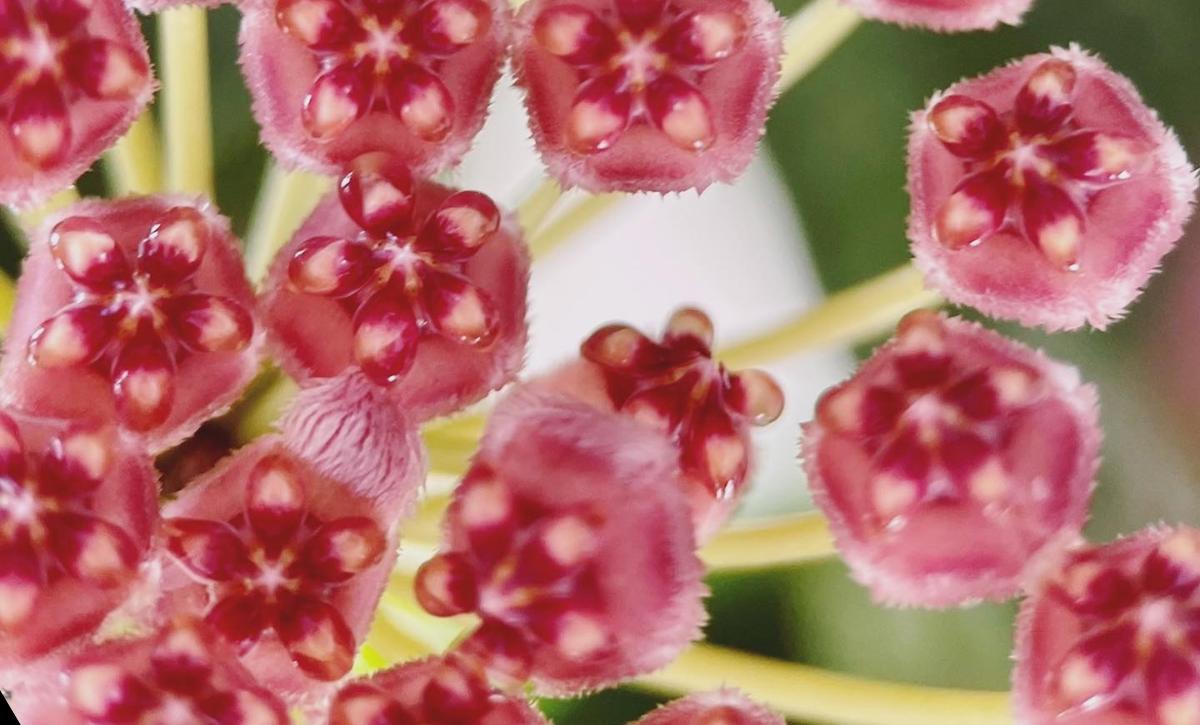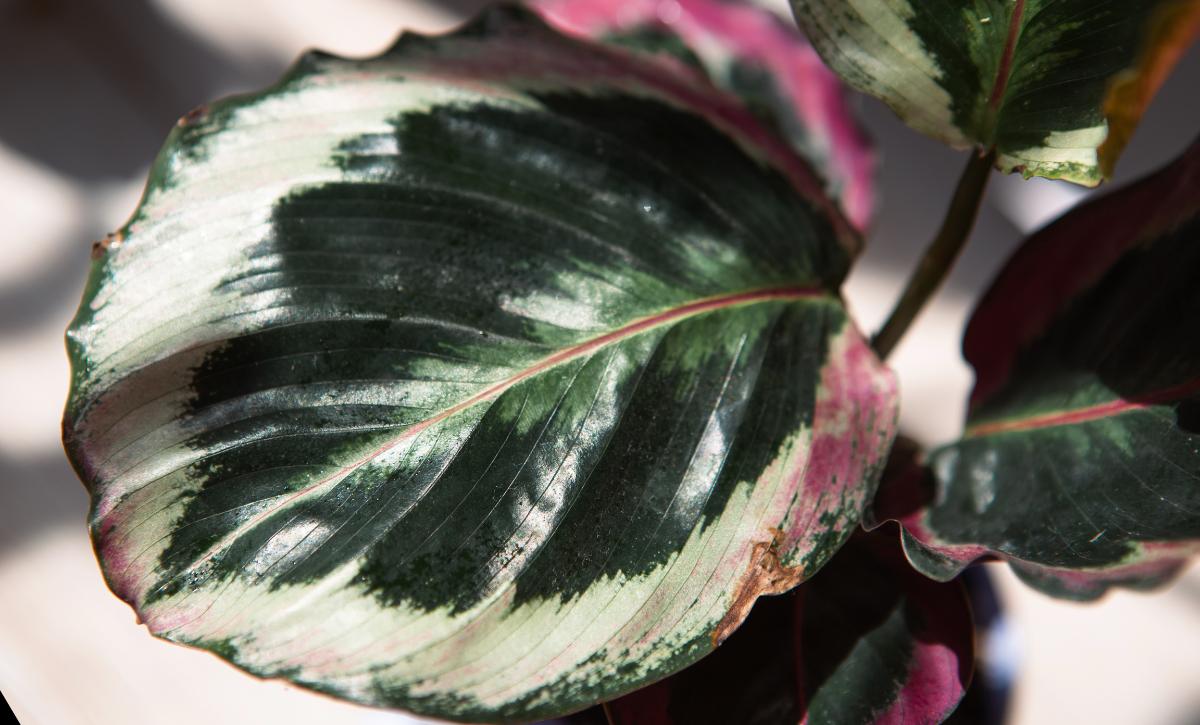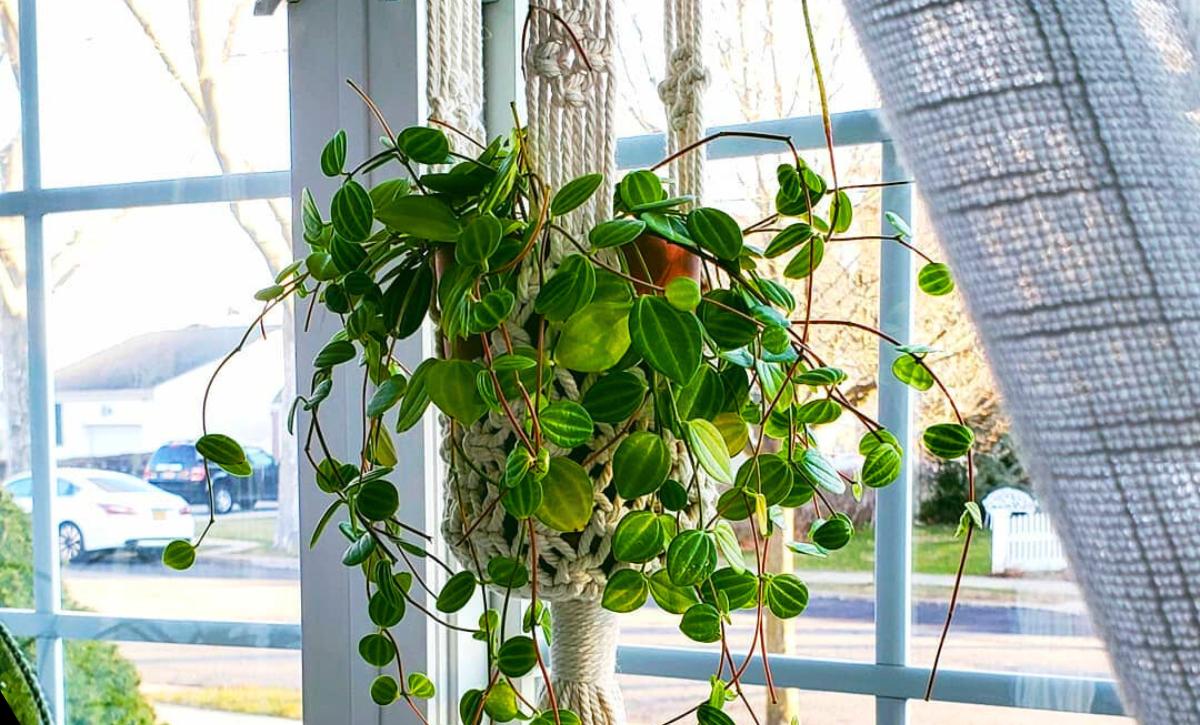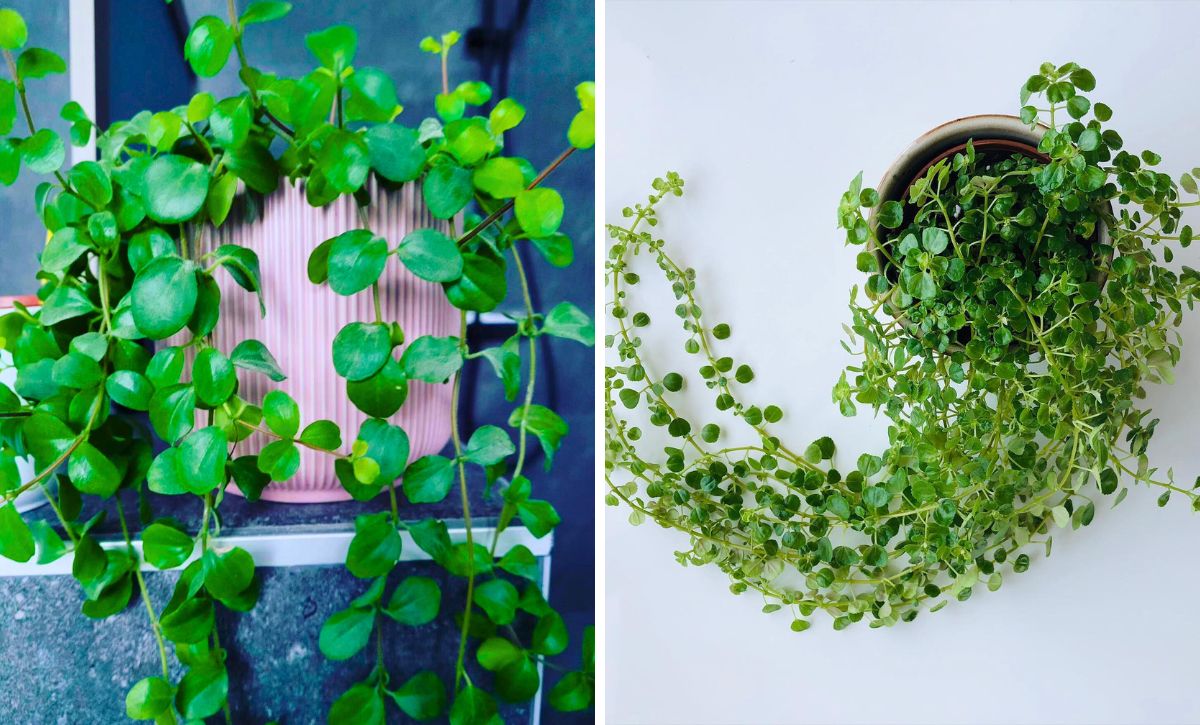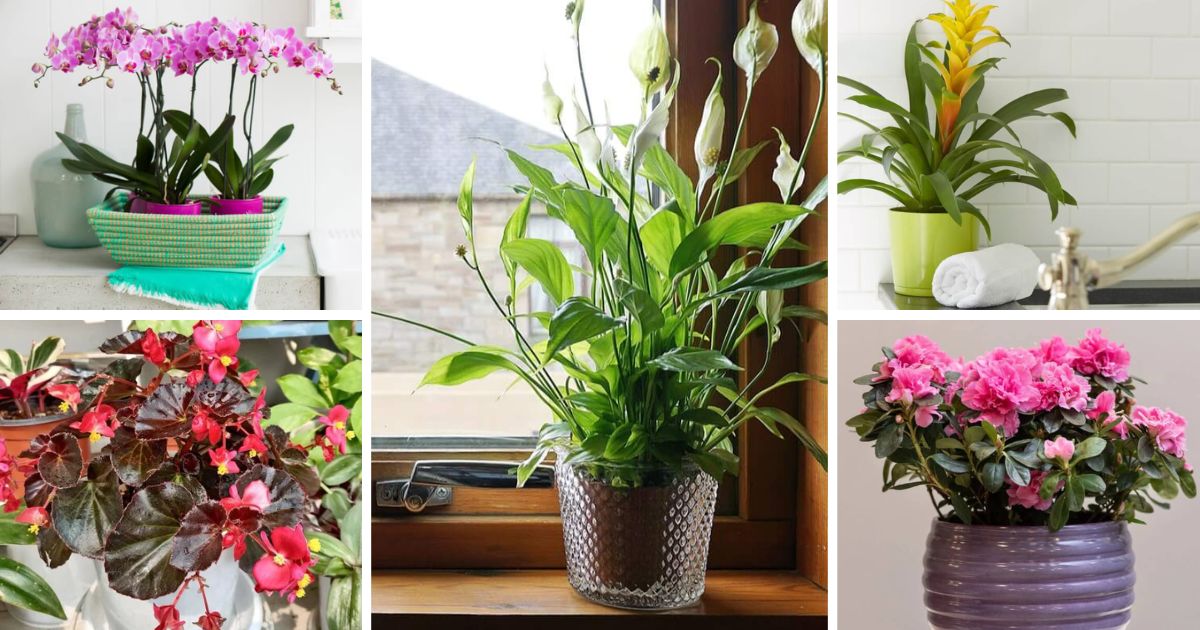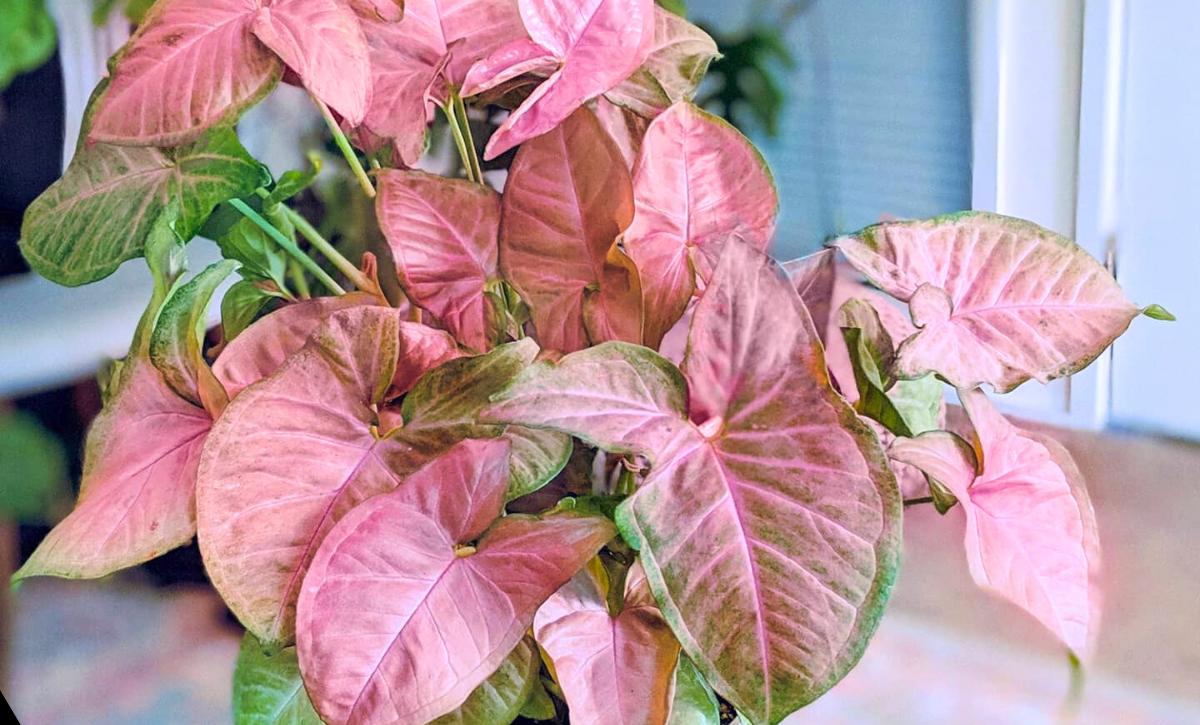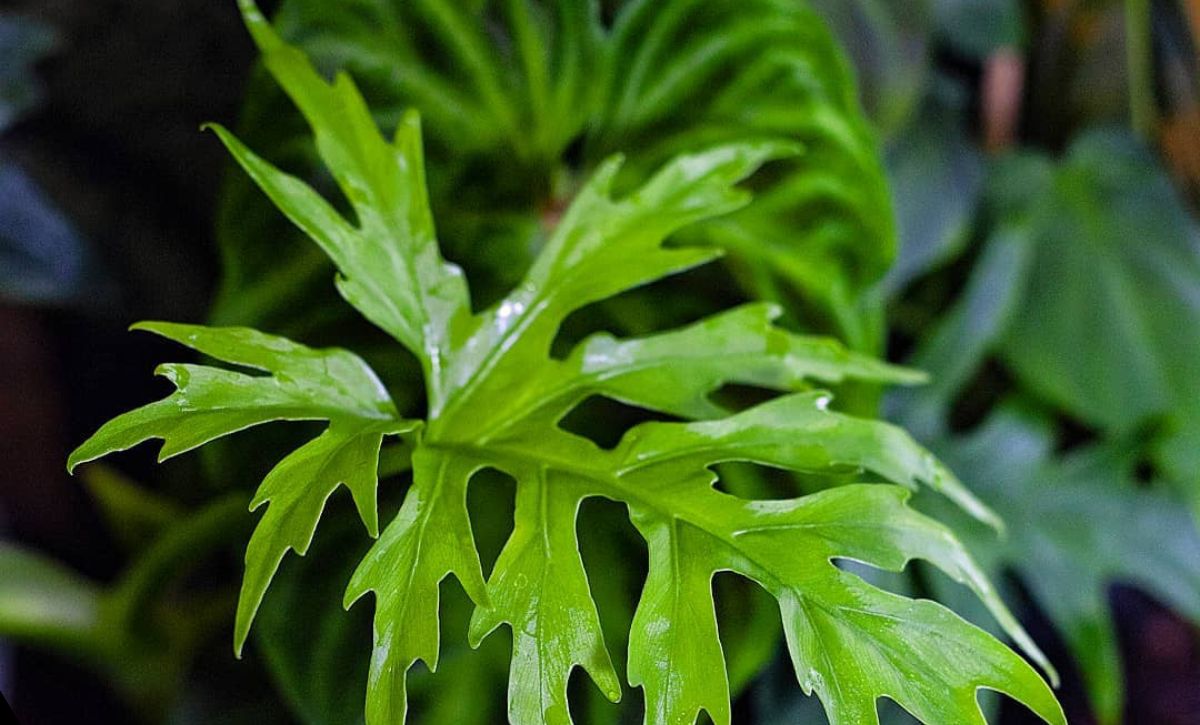Peperomia is one of the most common house plant species, and it comes in different types, such as Peperomia obtusifolia, Peperomia caperata, Peperomia argyreia, and Peperomia polybotrya. However, nothing matches the beauty of Peperomia angulata.
The Angulata climbing plant will make the perfect addition to a rustic or modern home design.
Growing this plant in a hanging basket or pot in a well-lit room will add aesthetic to the space and capture the attention of any friends or guests you have visiting.
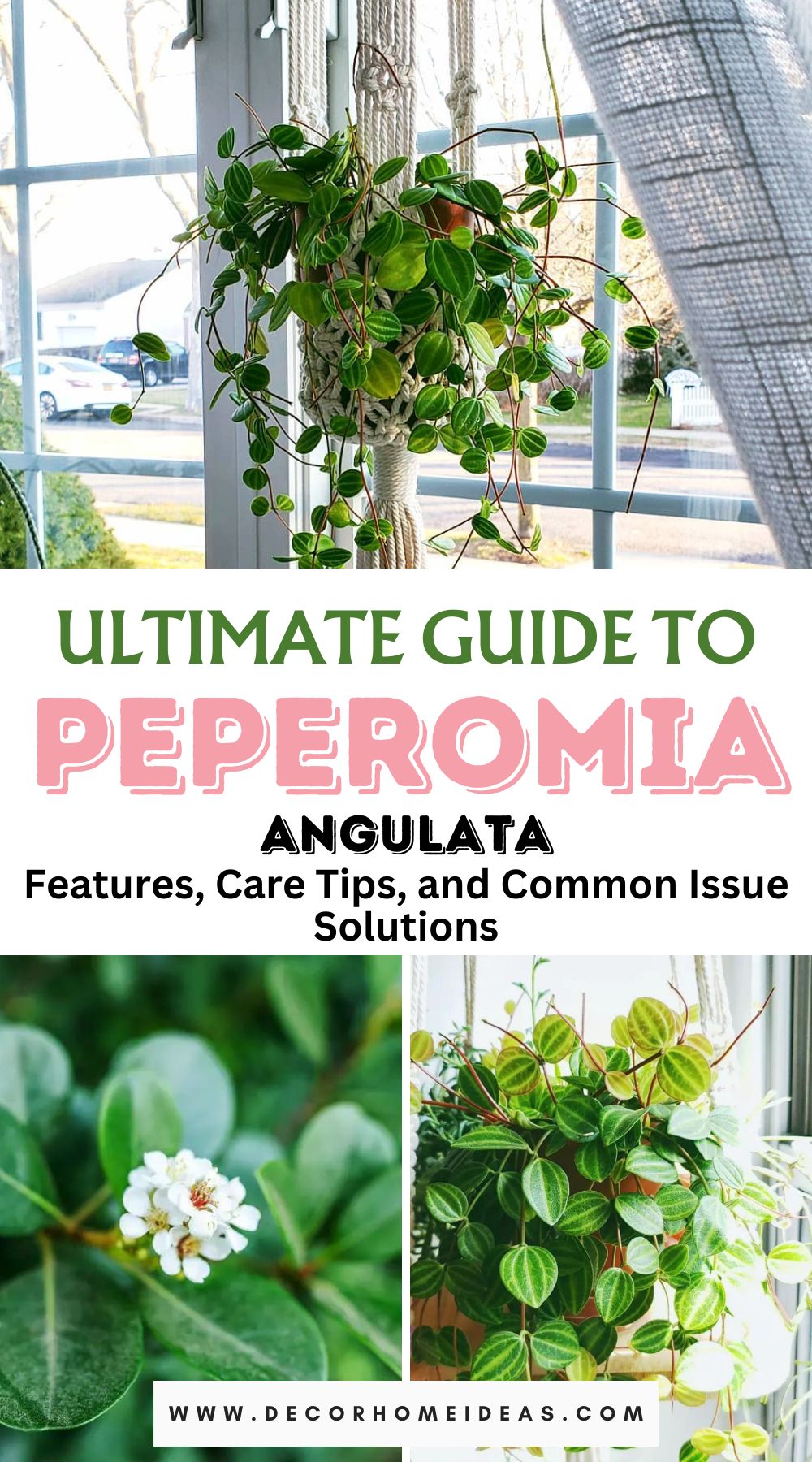
Let’s take a look at the general specifications of this plant:
| Scientific name: | Peperomia angulata |
| Native habitat: | South America |
| Growth rate: | Slow-Grower |
| Size: | 8-12 inches (20-30cm) |
| Type: | Herbaceous perennial |
| Toxicity: | Non-toxic |
This article will outline the detailed care guide for this plant and other fascinating facts such as the background and common issues that may affect it.
Let’s dive into it!
Plant Care Guide for the Peperomia Angulata
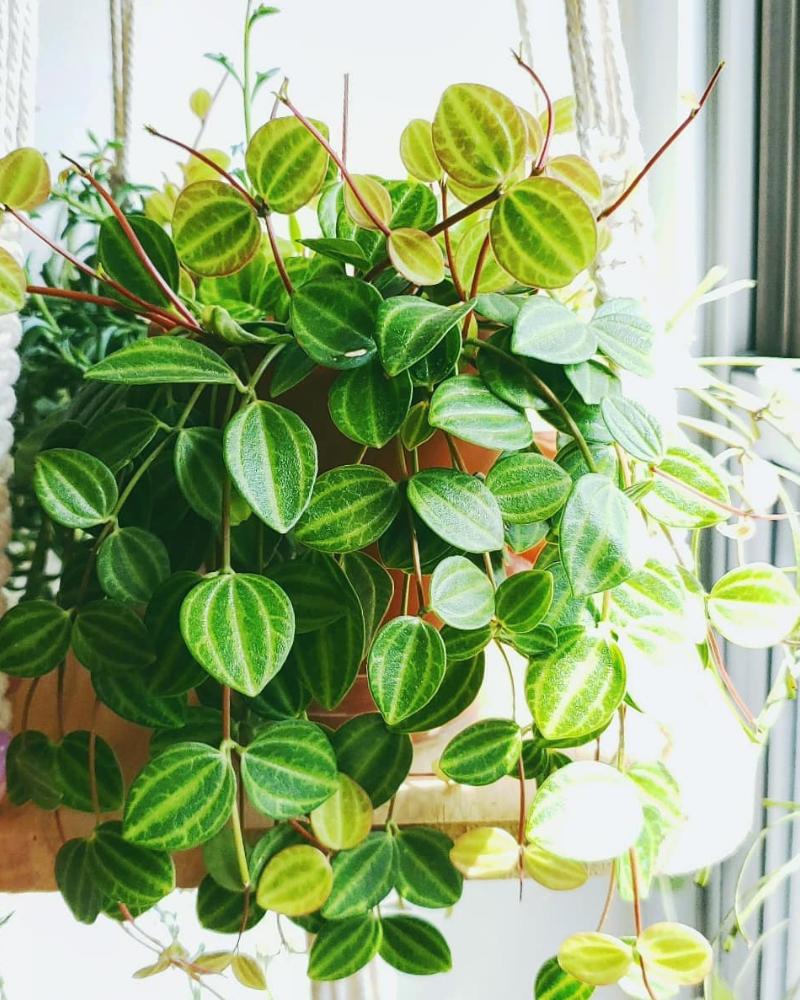
via mypetitegarden
The care guide for this plant is simple: it needs a little bit of water, sufficient indirect sunlight, and well-draining soil to thrive.
In the following section, we’ll dive into the specifics of the care guide for this unique plant. You should note that peperomia plants are usually low-maintenance, so they don’t need an extensive care guide.
Light
The Peperomia angulata, known as the radiator plant, thrives in indirect sunlight. The native habitat of the plant is in the Amazon region, and being a climber, it has gotten used to being shaded from direct sunlight.
Growing the plant indoors in an area with plenty of light is enough to mimic the shaded natural habitat of the plant.
While the plant thrives in medium light conditions, it can also tolerate low light. The lack of sufficient light will be exhibited in its foliage, which begins to lose the deep shade of green and slows down the plant’s growth.
Keep the plant in a room where it can get sufficient indirect light, preferably near windows, but ensure it’s a few feet away; the hot afternoon sun may damage the plant’s delicate foliage.
As for placing, the best spot to keep your Angulata is in a west-or-east-facing room.
This ensures the plant is provided with the right light conditions such that the growth is fast, making the plant develop a lush, deep green color.
Water
The radiator plant is semi-succulent, so it’ll need frequent watering.
Since the plant is somewhat drought-tolerant, you must only water it once the soil has dried out completely.
During the winter period, when the plant is dormant, you should water even less as it won’t use a lot of water.
To avoid or minimize the chances of overwatering, water the plant only if it needs to be, and regularly check the soil for dryness before watering.
Humidity
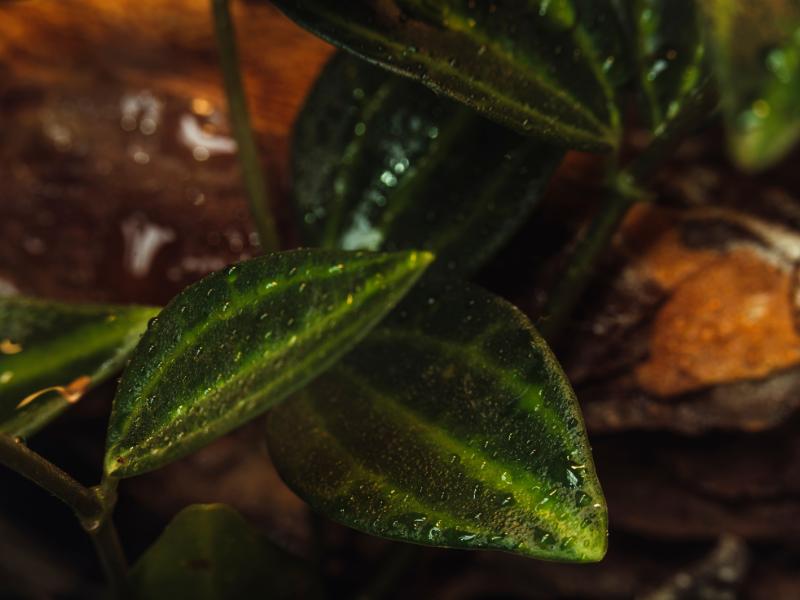
As we stated, this plant is only partly succulent; it still needs other tropical conditions, such as the climate and humidity.
The good news is that this plant will survive even under normal household humidity levels. However, the best condition for this plant is when it’s under high humidity. So, to provide your plant with optimal conditions, raise the humidity around it.
You can take several measures to increase the humidity levels, such as misting the leaves or using the pebble tray method. When misting, ensure the leaves don’t stay wet for too long, as this could develop fungal diseases.
DIY methods like misting and pebble trays may not appeal to everyone, especially those who don’t like the aesthetic that pebble trays add. In this case, you can opt for an alternative method, such as a humidifier.
These gadgets increase the humidity around the plant automatically without endangering the plant. You can choose from several varieties, with some being inconspicuous such that they won’t interfere with your aesthetics.
Alternatively, you can keep the plant in a terrarium or the bathroom if you’re on a tight budget and don’t want to risk your plant.
Temperature
Since this plant prefers a tropical climate, it goes without saying that it should be grown under warm temperatures.
The Beetle peperomia can thrive at room temperature of about 65-75℉ (18-24℃). The plant can also survive in low temperatures of about 50℉ (10℃) but only for a limited period.
It’s important to note that the prolonged exposure of the plant to extremely low or high temperatures could lead to stunted growth.
Avoid placing the plant in areas around drafts or frequent temperature changes, as this could have severe implications for the plant’s growth.
Soil
Being an epiphyte, the Peperomia angulata grows on trees in its natural habitat. Here, the plant feeds on the nutrients found in plant debris, air, and rain.
When growing the plant as a houseplant, you must mirror these conditions to thrive. The plant should be grown in well-aerated and well-drained soil that is nutrient-rich.
To increase the drainage of the soil, you can add some perlite or coco coir to your potting mix or succulent soil mix. Adding other components, such as compost, will enrich the substrate with nutrients. You can also add peat moss to the plant to improve moisture retention.
Fertilizer
The Radiator plant responds well to fertilization, and while you should do it monthly, ensure you don’t overdo it.
The best fertilizer for this plant is a balanced, general-purpose like triple 14 or triple 10. If you use a liquid fertilizer, ensure it’s diluted to half strength to minimize the risk of overfertilization.
The best time to fertilize this plant is during the growing season. This is usually during the spring and summer as the plant enters its dormancy seasons in fall and winter. During the dormant season, you should reduce fertilization once every two months, or you can stop fertilizing altogether.
Repotting
The Beetle peperomia has a shallow root system since it’s a slow grower, meaning you don’t need to repot it frequently.
You can repot the plant every 3-4 years. However, if you notice the plant has become root-bound, i.e., roots coming out of the drainage holes, it’s time to repot the plant to a larger pot.
Ensure you repot the plant to a pot one or two sizes larger than the original pot.
Repotting should be done during the beginning of the growing season, which will give the plant enough time to adjust to its new surroundings when it’s actively growing.
Propagation
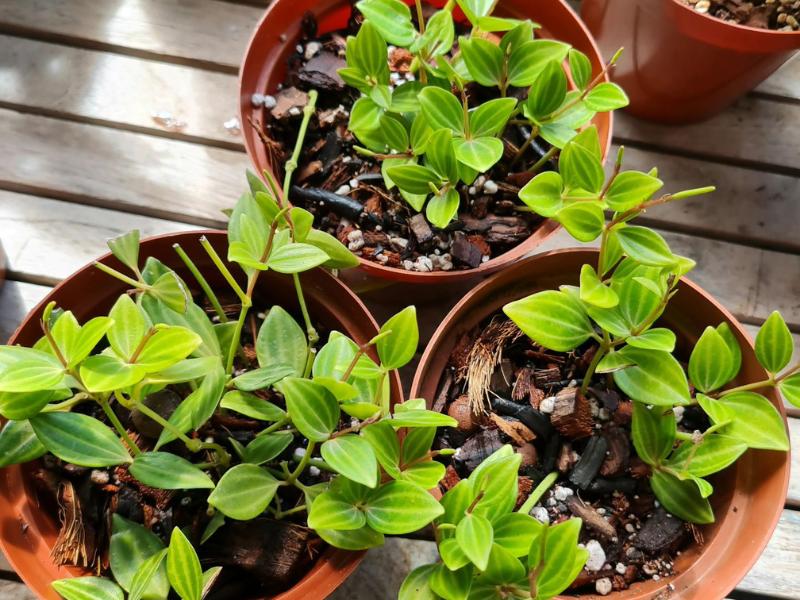
via plantladyraz
You can propagate Peperomia angulata in three ways: leaf cuttings, stem cuttings, or propagating by division.
The easiest propagation method is by leaf or stem cuttings since these methods have a high chance of success. Let’s take a look at how you can propagate through these methods.
Propagation by stem cuttings
This is one of the easiest and most successful methods to quickly get you new Peperomia angulatas.
You can propagate the cuttings in water or soil, but the propagation by water method is much faster.
Whether propagating by water or soil, the first step is to pick a healthy stem with several leaves and cut them just above the leaf nodes.
Next, you’ll have to place the cuttings in the medium that you have chosen, either in a jar of water or in a nursery pot full of fresh, well-drained soil.
If you decide to propagate the plant by water, you’ll have to cut all the leaves submerged under water as they will rot and contaminate the water.
Changing the water every 1-2 days is essential to reduce the contamination risk. Once you notice root formation on the stems, you can remove them from water and plant them in fresh potting soil.
When propagating in soil, the only trick is ensuring the soil is moist. This improves the development of new roots as the plant adjusts to the new surroundings. Ensure you supply the cuttings with sufficient indirect sunlight during this period.
Propagation by leaf cuttings
This method is as successful as the stem cutting method. All you need to do is cut off a healthy leaf with about an inch-long petiole.
Dip the leaf in a rooting hormone once the region where you made the cutting has healed. Now, plant the leaf in fresh potting soil. If propagating multiple leaves, ensure they’re grown at least 4 inches (10cm) from each other.
As usual, always keep the soil moist; once you notice new growth on the leaves, it’s time to repot the plant.
Pruning and Cleaning
Pruning is a vital plant care step in this peperomia. It would help if you did it to remove any diseased, scorched, or dried leaves. This is to improve the aesthetics and the overall health of plants.
Whatever the reason for pruning, always ensure you use sterilized tools such as shears and clippers to make cuttings on the plant. This reduces the risk of infecting the plant with bacteria, which may seriously impact the plant’s health.
More About the Peperomia Angulata
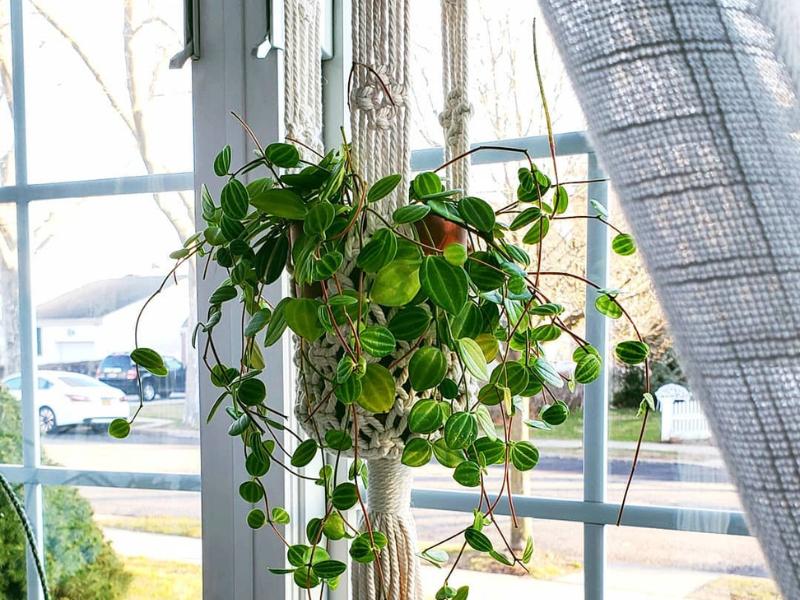
via mypetitegarden
Now that we have learned the essential care guide for the Beetle peperomia, it’s time to learn more about this plant, such as its background, how the flowers and foliage look, and the main issues that may affect it.
Background
Many different names in different parts of the world refer to this plant. While the plant’s scientific name is Peperomia angulata, it may also go by Peperomia quadrangularis. The other common name this plant goes by is the Beetle peperomia or the radiator plant.
The plant was first discovered growing on trees in South America in the Amazon Forest. After being domesticated, the plant can be found in many homes worldwide.
Having a Southern American native origin hasn’t made this plant inaccessible, and you can get it on online shops for less than $25.
Flowers and Foliage
One of the most prominent features of this plant is the foliage. The plant has fleshy, dark green leaves striped with light green lines that are almost yellow.
The leaves are oval and will sometimes hide the long, thin, almost inconspicuous flowers, but the enchanting foliage of the plant will attract all the attention.
This plant will thrive well when grown with an accompanying friend, and the Peperomia Scandens variegata is perfect for this role. It’s a trailing plant with variegated leaves that can be excellent in highlighting the greenery of the radiator plant.
Common Issues
When growing any plant, you must ensure you can deal with all issues that may arise along the way.
In this section, you’ll learn about the common issues the Beetle peperomia may face and how to deal with them.
Pests
This plant is resistant to many pests but may get attacked by spider mites, aphids, and mealybugs.
These pests will typically invade unhealthy plants, so the best way to protect your plant is to ensure it’s well cared for.
If the pests invade your plant, the first step is separating the infested plants from the healthy ones to reduce the risk of infestation and spread.
Once you have isolated the plant from other plants, it’s time to remove the pests. You can do this by either a strong water spray or by removing them by rubbing alcohol.
The best solution for large-scale infestation is spraying the plant with insecticide or neem oil. You can also use insecticidal soap.
Diseases
Luckily for the radiator plant, it doesn’t get attacked by many diseases except root rot, which is caused by overwatering.
Several signs of root rot on the plant include drooping, wilting, and discolored foliage. In such a situation, you must remove all the affected roots and repot the plant.
Another common fungal disease that may attack the plant is leaf spot. This disease is usually exhibited by lesions forming on the plant. Once you notice these signs, isolate the affected plant from the healthy ones to reduce the risk of the disease spreading.
Next, remove the affected leaves and spray some fungicide to clear all the fungal traces.
The best way to ensure the survival of your plants is to prevent these diseases from attacking this plant in the first place since you never know the scale of infection you’ll get.
Frequently Asked Questions
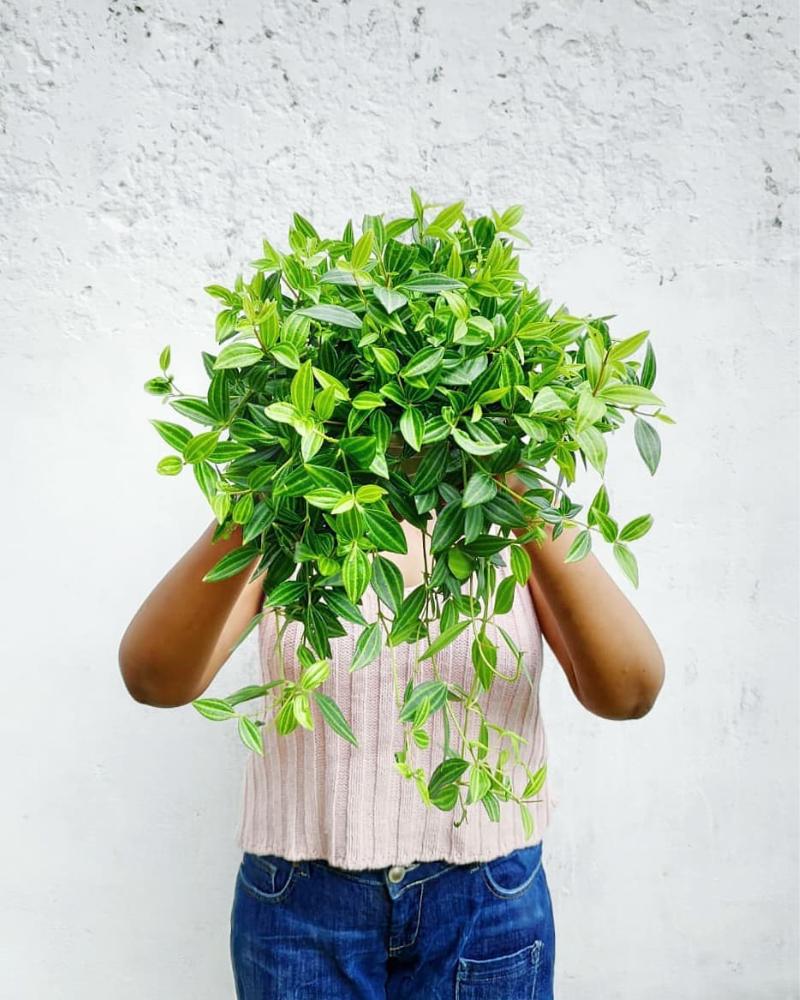
via witch_crafts
Now that you know all about the Beetle peperomia, it will be even better if we answered some common questions that people have about this perennial.
What is the difference between Peperomia angulata and Peperomia rotundifolia?
While the two plants are around 12 inches (30 cm), the angulata has oval-shaped foliage larger than the Peperomia rotundifolia, whose leaves are small and button-like.
Another common difference is in the color of the foliage. The angulata has dark green leaves with yellow-green lines running across the surface. The vegetation of rotundifolia is lighter, and the lines running across the leaves are inconspicuous.
Is the Peperomia angulata safe to eat?
This plant is neither toxic to pets or humans, so they can technically eat it, but it has a mysterious taste.
Since it’s safe to eat, people have used peperomias as a spice, such as the Peperomia pellucida, used not only as a spice but also as medicine.
Does the Peperomia angulata make a good indoor plant?
The Radiator plant is a perfect houseplant since it thrives in indirect sunlight and normal household humidity levels.
This plant will liven up your space with its unique foliage, and you won’t have to stress much about its maintenance. Watering doesn’t have to be daily; if you maintain its ideal temperatures, it can survive for years.
What are the benefits of the Peperomia angulata?
There are several benefits to growing this plant, but the most obvious one is that it helps purify the air. In fact, growing three to four peperomias will create a natural air filter at no extra cost!
Beetle peperomia has also been shown to reduce the indoor concentration of formaldehyde by almost 50%, so if not for the beauty, this will be a good reason to buy one.
Since the plant is relatively drought resistant, forgetting to water it occasionally won’t have serious repercussions, though I would advise against it.
Final Remarks
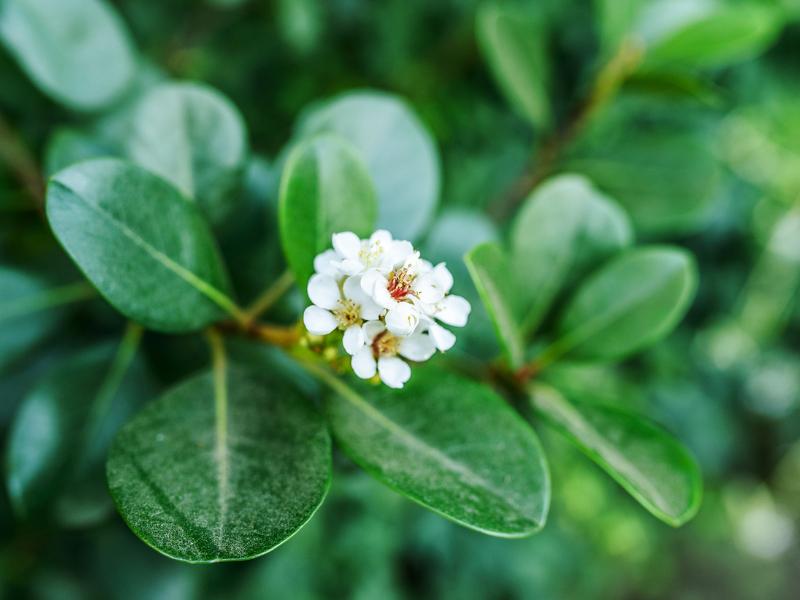
We have seen that Peperomia angulata is a low-maintenance epiphyte that’ll thrive under low light conditions and very little water.
The most essential component the plant needs to grow healthy is a well-drained and aerated substrate and fertilization occasionally. Ensure you prune it periodically to make the beautiful foliage even more attractive.
Since this article has covered some of the most common pests and diseases that may attack this plant, you’ll be well-versed in addressing any issues that may arise with your plant and even prevent them.
So, what more do you need from a houseplant besides a low-light, low-maintenance radiator plant?
Try one today and see how easy they are to grow!

